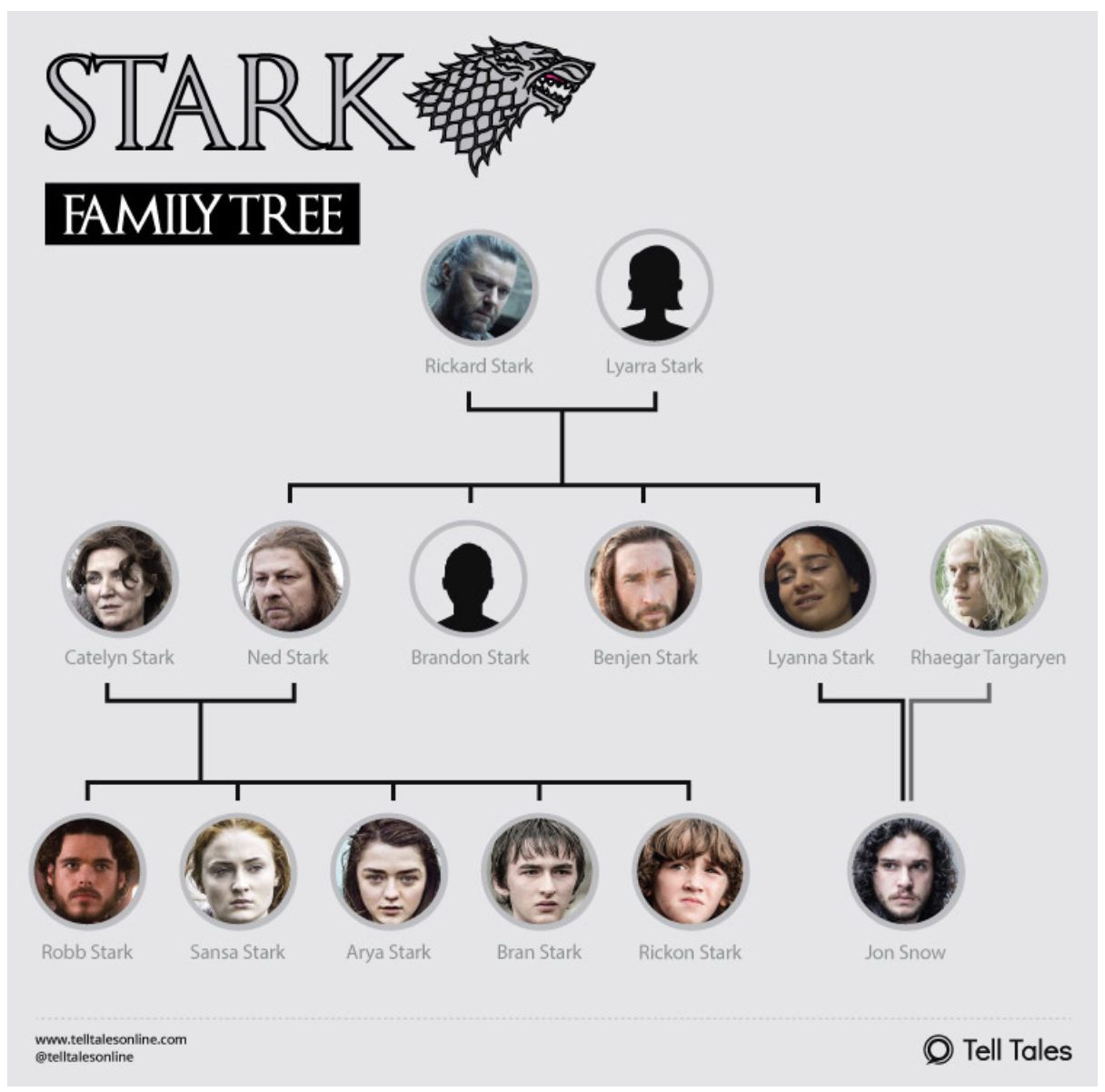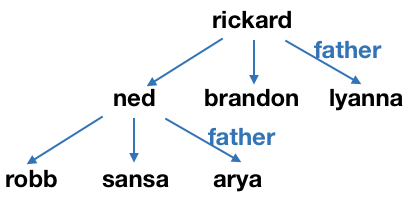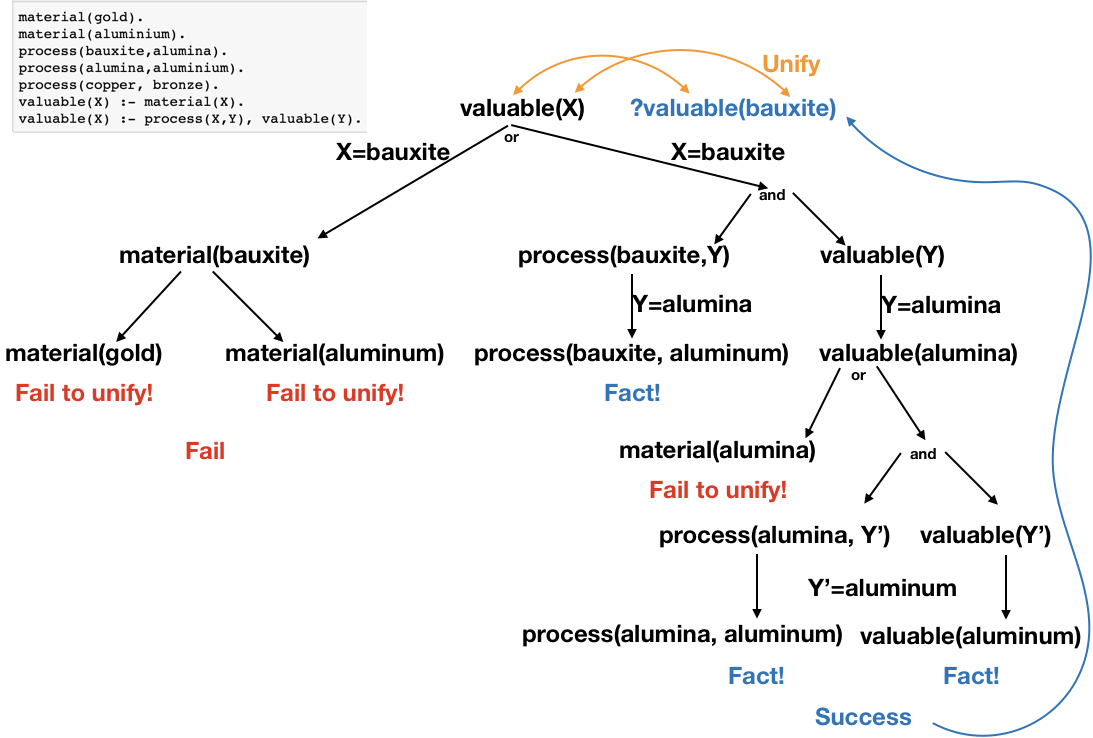Prolog Basics
CS314
Imperative programming¶
Computing the sum of the elements of an integer list in Java.
int sum (int[] list) {
int result = 0;
for (int i = 0; i < list.length; i++)
result += list[i];
return result;
}
Functional Programming¶
Computing the sum of the elements of an integer list in OCaml.
let rec sum l = match l with
| [] -> 0
| x::xs -> x + sum xs
Logic Programming¶
Computing the sum of the elements of an integer list in Prolog.
sum([],0).
sum([H | T], N) :- sum(T,M), N is H+M.
Notice that this is a declarative reading of the sum of a list.
Declarative vs Operational¶
- This Prolog program says what the sum of a list is.
- OCaml and Java programs were about how to compute the sum.
- In particular, prolog program does not define control flow through the program.
- program is a collection of facts and rules
Prolog Program Answers Questions¶
+-----------------+
Queries ==> | Facts + Rules | ==> Answers
+-----------------+
Prolog ProgramFacts and rules together build up a database of relations.
Relational view of the sum program¶
The program
sum([],0)
sum([H | T], N) :- sum(T,M), N is M+H
inductively defines a table of relations:
+-------------+
| List | Sum |
|-------|-----|
| [] | 0 |
| [1] | 1 |
| [1,2] | 3 |
| [2] | 2 |
| ... | ... |Queries are look ups in this table¶
?- sum([1,2,3],X).
Of course, the computation model is not to build a database and look up facts.
Why this declarative view?¶
- Many problems in computer science are naturally expressed as declarative programs.
- Rule-based AI, Program Analysis (asking questions on code), Type Inference, queries on graphical programs, UIs.
- But the programmer has to convert this to Von Neumann Architecture.

Logic Programming to the rescue¶
- Logic programming the programmer to declaratively express the program
- The compiler will figure out how to compute the answers to the queries.
Prolog = Logic (programmer) + Control (compiler)Prolog¶
- Is one of the first logic programming languagues
- to be precise, it is a family of languages that differ by the choice of control
- Invented in 1972, and has many different implementations
House Stark¶

Prolog Terms¶
Prolog programs are made up of terms.
- Constants: 1,2,3.14,robb,'House Stark', etc.
- also known as atoms.
- Variables: Always begin with a capital letter.
- X, Y, Sticks, _.
- compound terms: male(robb), father(ned,robb).
- Top-function symbol/functor: male, father
- arity: Number of arguments; male = 1, father = 2.
- top function symbols also written down explicitly with arity such as male/1, father/2.
House Stark -- Facts¶
father(rickard,ned).
father(rickard,brandon).
father(rickard,lyanna).
father(ned,robb).
father(ned,sansa).
father(ned,arya).

House Start -- Queries¶
?- father(ned,sansa).
?- father(rickard,sansa).

?- father(ned,bran).
- Closed World Assumption: Prolog only knows the fact that it has been told.
- Assumes
falsefor everything else. - Interesting interactions with negation (we will see this later).

Existential Queries¶
- Apart from true/false questions, we can also ask queries that return other answers (existential queries).
"Who are Ned's children?"
?- father(ned, X).

Existential Queries¶
"Who is the father of Arya?"
?- father(X,arya).
"Who are Robb's children?"
?- father(robb,X).

Rules¶
- So far what we have done could have been done with a relational database.
- Rules define further facts inductively from other facts and rules.
- Rules have a head and body.
H :- B1, B2, B3, ..., BN- $H$ is true if $B1 \wedge B2 \wedge B3 \ldots BN$ is true.
Rules¶
parent(X,Y) :- father(X,Y).
ancestor(X,Y) :- parent(X,Y).
ancestor(X,Y) :- parent(X,Z), ancestor(Z,Y).
Observe that Z only appears on the RHS of the last rule.
Rules¶
?- ancestor(rickard,X).
parent(X,Y) :- father(X,Y).
ancestor(X,Y) :- parent(X,Y).
ancestor(X,Y) :- parent(X,Z), ancestor(Z,Y).

Exercise¶
Define mother, cousin, uncle, aunt, sibling.
Example¶
material(gold).
material(aluminium).
process(bauxite,alumina).
process(alumina,aluminium).
process(copper, bronze).
valuable(X) :- material(X).
valuable(X) :- process(X,Y), valuable(Y).
- Which of these are valuable?
- gold, bauxite, bronze, copper.
- ?- valuable(gold).
- ?- valuable(bauxite).
- ?- valuable(bronze).
- ?- valuable(copper).

Example¶
?- valuable(gold).
?- valuable(bauxite).
?- valuable(bronze).
?- valuable(copper).
Unification¶
At the core of how Prolog computes is Unification.
There are 3 rules for unification:
- Atoms unify if they are identical
- e.g., bauxite & bauxite unifty but not bauxite & gold.
- Variables unify with anything.
- e.g., X & bauxite unify, X & valuable (bauxite).
- Compound terms unfiy only if their top-function symbols and arities match and their arguments unify recursively.
- e.g., valuable(X) & valuable(baxite) unify, process(bauxite, Y) & process(bauxite, alumina) unify.
Quiz¶
Which of these unify?
A. tree(l,r) & tree(B,C)
B. tree(A,r) & tree(l,C)
C. A & a(A)
D. a & a(A)
Quiz¶
Which of these unify?
A. tree(l,r) & tree(B,C) yes
B. tree(A,r) & tree(l,C) yes
C. A & a(A) yes (mostly), occurs check disabled by default
D. a & a(A) no